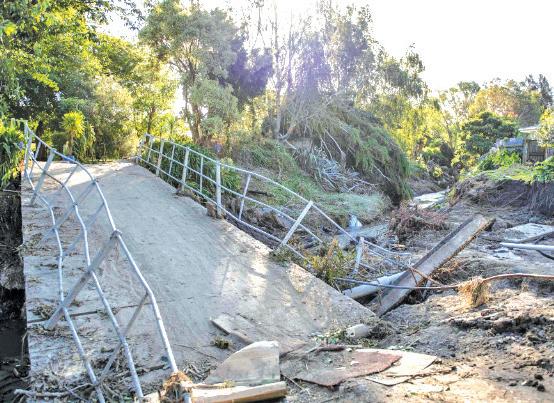
2 minute read
US holds drills with Asian allies after North Korea’s ICBM launch
The United States has held air exercises with South Korea and Japan involving strategic bombers, a day after North Korea fired a Hwasong-15 intercontinental ballistic missile (ICBM).
South Korea’s Joint Chiefs of Staff said the exercises on Sunday demonstrated the allies’ “overwhelming” defence capabilities and readiness.
“[The exercises] strengthened the combined operation capability and affirmed the United States’ ironclad commitment to the defence of the Korean Peninsula and the implementation of extended deterrence,” South Korea’s military said in a statement.
Japan flew F-15 fighter jets over the Sea of Japan with US B-1 bombers and F-16 fighters, Japan’s Defence Ministry said in a statement. It called the security environment “increasingly severe” after the latest North Korean missile landed within its Exclusive Economic Zone.
The long-range ballistic missile landed in the sea off Japan’s west coast after North Korea warned of a strong response to the planned military drills by South Korea and the US.
State news agency KCNA said North Korea test-fired a Hwasong-15 from Pyongyang airport on Saturday in what it called a “surprise ICBM launching drill”.
KCNA said the mis- sile flew 989km (615 miles) and travelled for just over an hour “before accurately hitting the pre-set area in open waters of the East Sea of Korea” – using the North Korean name for the Sea of Japan.
UN resolutions prohibit North Korea from testing ballistic missiles of any range, which – depending on their design – can also be equipped with a nuclear warhead. (Excerpt from Al Jazeera)
The death toll from Cyclone Gabrielle in New Zealand climbed to 11 on Sunday as thousands of people remained missing a week after the storm struck the country's North Island.
The cyclone hit the island's northernmost region on Feb 12 and tracked down the east coast, inflicting widespread devastation. Prime Minister Chris Hipkins has called Gabrielle New Zealand's biggest natural disaster this century.
On Sunday, Police said two more people had died in hard-hit Hawke's Bay in circumstances related to the cyclone.
More fatalities are possible, Hipkins told reporters, saying 3216 people had been determined to be OK, while Police were trying to ascertain the status of more than 3000 others.
Lives had been "turned upside down" by the disaster and recovery was a "steep mountain ahead", he said, pointing to disrupted telecommunications, shortages of fresh water and damaged roads still restricting access to some areas.
Supply chains were disrupted causing problems moving goods, many crops had been destroyed, and 28,000 homes were still without power, he said.
A team from Fiji would leave for New Zealand in coming days to assist with recovery, one of 12 offers of international aid received so far, Hipkins said. Twenty-seven emergency workers from Australia are assisting with the relief effort.
Recovery efforts continued on Sunday, with teams from Auckland Council carrying out rapid building assessments on damaged homes in the coastal areas of Muriwai and Piha, about 60 km (40 miles) west of the nation's largest city, Auckland.
Emergency authorities and the military have been dropping critical supplies via helicopter to communities stranded since the cyclone, which washed away farms, bridges and livestock and inundated homes. (Excerpt from Reuters)








